Genre: Platform Developer: Traveler’s Tales Publisher: Disney Int./Activision Players: 1 Released: 2000
Disney platformers were a rarity among licensed games in that they were, more often than not, genuinely good games and the license only enhanced their appeal. This was certainly true of the original Toy Story on Mega Drive, which was a childhood favourite, along with the movie it was based on. The game’s sequel was based on the 1997 film Toy Story 2 and came in 1999 first on the Nintendo 64 and PlayStation before being ported to the PC and the Dreamcast. Traveler’s Tales, (who are now better known for LEGO games), developed both titles.
I had become more interested in PC games at the time the game came out, so I only remember playing it briefly on Nintendo 64 and a little on PlayStation. It wasn’t until after seeing Toy Story 3 over a decade later that I went back to the game on the Dreamcast. As it happens, this was the best system to play it on as it had none of the limitations the other consoles and is also the only way to play it on a Sega console, which is what we’re all here for.
As mentioned, the original Toy Story game on Mega Drive was one of my favourite games on the system. It had plenty of solid platforming along with some interesting side levels using RC, Roller Bob, Buzz, and an amazing (for its time), FPS level. I finished it several times, but it is not a game that I’ve gone back to for a very long while. The movies released within a few years in the same time frame that the platform genre moved to 3D. As can be expected, Buzz Lightyear to the Rescue takes most of its influence from Super Mario 64 with open world levels, each with differing goals. Each level contains five Pizza Planet tokens which you will need to unlock the boss stages. There are 50 in total but you only need 40 to get to the final stage.
The game loosely follows the events of the movie, and as you would have inferred from the title, you play as Buzz. In that role, you are given use of a variety of power-ups related to the character. His laser is an effective and invaluable attack weapon, he can use his wings to double jump, and he also has a variety of collectable power-ups which are rocket boots, hover boots, a grapple hook, a shield, and a disk launcher. All of these items are context-specific and are not used more than a few times throughout the game. They are earned from Mr. Potato Head in exchange for pieces of him that have been lost, and as you earn these you’ll also be able to return to earlier stages and obtain previously unreachable tokens.
While it is a 3D platformer, the game doesn’t have good analogue control. You can use the Dreamcast’s analogue, but Buzz will run like he’s been sucking down Darjeeling all day. The D-pad made the gameplay much more precise and was my preferred way to control Buzz most of the time. The analogue control being worse than the D-pad in a 3D platformer is not a good sign, but there are typically also issues with an often frantic camera that make the experience worse. Many levels in the game require precision platforming, and you will often be travelling vertically. So, falling means starting all over again from the bottom. In fact, the best way to test whether the game will be too much for you is to quickly advance to the second stage, find a tree, and start climbing it. If you don’t get infuriated by that task, then you will be able to play on to the end. In the games defense, apart from the oddly imprecise analogue, these were common problems with the genre at the time.
Even with all the falling, the game can still be slightly forgiving as some stages allow you to push blocks or drop ropes to make climbing back up after a fall a little easier. Buzz can also grab ledges, which mostly works fine, but sometimes inexplicably doesn’t work at all. I also had a few issues with falling straight though platforms, and the game even froze on a few occasions after falling from a great height. The time attacks and races can also be frustrating for the same reasons. By the later stages of the game, I had gotten used to these issues, but I don’t want to brush them aside all the same.
You will spend most of your time platforming, but the game will also require some combat. Buzz has his laser and a wing spin move to destroy enemies. There is a first-person view that allows more precision but no lock-on. The lasers will generally track their target if you point in the right direction. This is not always easy considering the lack of analogue support. The boss battles are generally fairly easy though and always require Buzz using one of the two moves mentioned earlier.
The Dreamcast port looks much nicer than the original releases, especially the PlayStation version. It also includes video scenes from the movie that won’t impress anyone playing today but were still neat at the time. One video is a bonus for collecting all 50 Pizza Planet tokens too. There are some great original music tracks that complement the use of music from the film. Many of the original voice actors are used for the characters, though this can get repetitive when heard over and over again any time you are in proximity to one. Buzz also utters plenty of his own one-liners and is voiced by Tim Allen.
Despite all my frustration, I actually found myself enjoying the game — certainly around the halfway mark. By this time I had got used to the jittery camera and had a handle on the controls. I think the main reason I began to enjoy it was the level design. Some levels are unfortunately quite bland and dark, but all are large with a lot to explore. Some favourites would be the second neighbourhood stage, Andy’s home, and Al’s Toy Barn. Most levels allow you to travel high up, and there are secret rooms to be found throughout the game as well.
Toy Story 2: Buzz Lightyear to the Rescue has fifteen levels and will take about ten to twelve hours to see through to the end for most players. It might not hold up as well as it did twenty years ago, but there is still fun to be had for those looking for it. Given there are relatively few games in the genre on Dreamcast, this is a recommendation for anyone looking for more and of course, anyone who enjoyed the source material.
SCORE: 7 out of 10

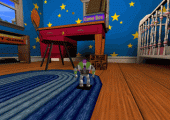
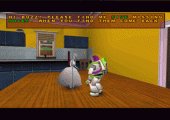
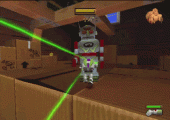
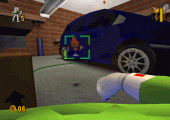
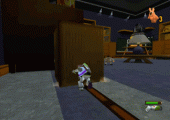
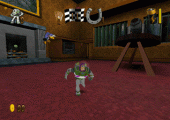
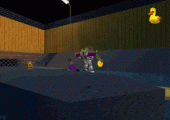
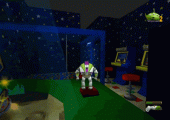
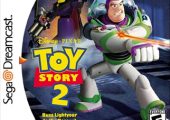
Recent Comments